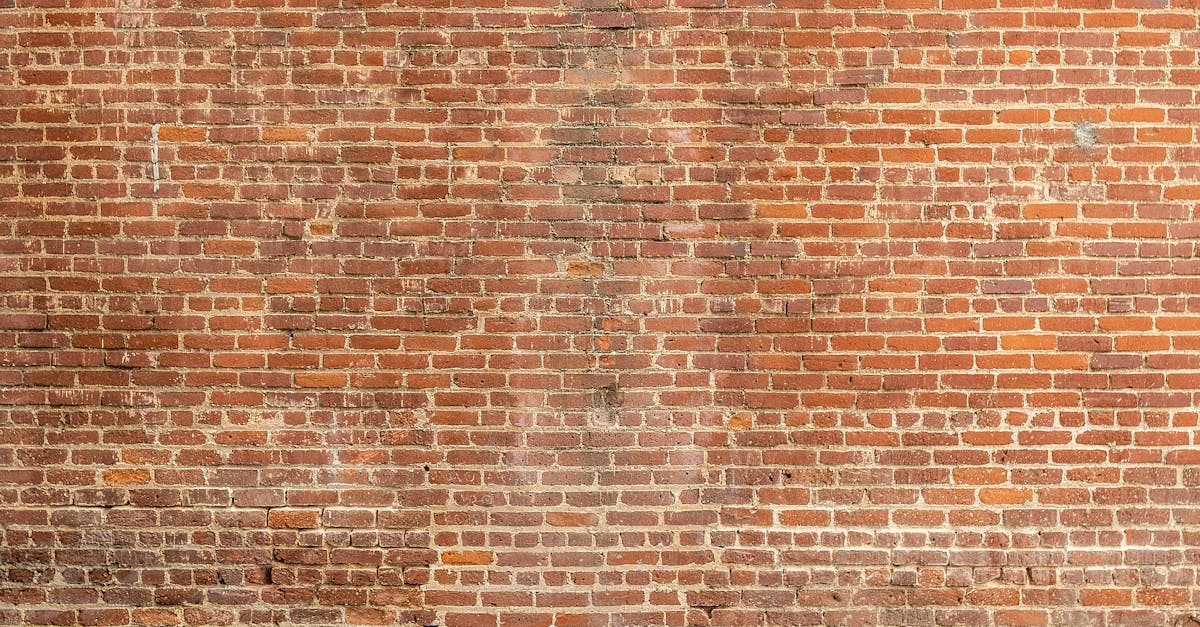
Understanding the Benefits of Wood-Plastic Composites for Cladding
Table Of Contents
CostEffectiveness
Wood-plastic composites offer an economical solution for cladding projects, blending the durability of wood with the longevity of plastic materials. Their resilience to environmental elements reduces the frequency of necessary maintenance and replacement. This durability translates into a lower total cost of ownership, as homeowners face fewer ongoing expenses over time.
The initial investment in wood-plastic composites may be slightly higher than traditional materials; however, the long-term financial advantages become apparent. Savings accrued from reduced maintenance, enhanced energy efficiency, and the extended lifespan of the product create a compelling case. These composites also retain their aesthetic appeal, minimising the need for ongoing cosmetic repairs or replacements.
LongTerm Financial Benefits
Wood-plastic composites offer considerable long-term financial benefits, particularly due to their durability and low maintenance requirements. These materials resist rotting, warping, and splintering, which can lead to significant savings on repairs and replacements over time. Homeowners can be reassured by the longevity of these products, knowing that they will not need to invest frequently in upkeep, unlike traditional cladding materials.
In addition to reduced maintenance costs, wood-plastic composites can also provide excellent value through their insulation properties. Improved energy efficiency can lead to lower heating and cooling bills, contributing to cost savings as utility expenses decrease. Investing in wood-plastic composites thus not only enhances the aesthetic appeal of a property but also supports long-term financial sustainability.
Installation Benefits
Wood-plastic composites are designed to streamline the installation process. Their lightweight nature facilitates easier handling, making them less labour-intensive to transport and fit. Additionally, these materials often come in standard sizes, which helps minimise cutting and waste on site. This standardisation can lead to faster project completion compared to traditional timber or other cladding materials.
Moreover, the compatibility of wood-plastic composites with regular tools simplifies installation. There is no need for specialised equipment, which can significantly reduce upfront costs for both contractors and homeowners. The ease with which these materials can be worked allows for greater flexibility during installation, accommodating various architectural designs without compromising structural integrity.
Simplified Fitting Processes
The design and structure of wood-plastic composites allow for a user-friendly installation experience. Many products come with interlocking systems that eliminate the need for complex tools or extensive construction knowledge. This ease of fitting reduces labour time on site, making it a suitable choice for DIY enthusiasts and professionals alike.
Furthermore, the lightweight nature of these materials contributes to a more manageable installation process. Handling and transporting wood-plastic composites is straightforward, minimising the risk of injury or damage. The ability to cut and adjust these materials with standard tools adds to their adaptability, ensuring that they can be seamlessly integrated into various architectural designs.
Thermal Performance
Wood-plastic composites (WPCs) are recognised for their impressive thermal performance, making them a standout choice for cladding applications. These materials offer superior insulation compared to traditional wood or plastic alone. The blend of wood fibres and thermoplastic elements creates a product that effectively reduces heat transfer. This quality contributes to comfortable indoor environments and minimises reliance on heating and cooling systems.
Energy efficiency plays a vital role in the overall sustainability of a building. By improving insulation, WPCs help to maintain stable indoor temperatures throughout various seasons. This thermal efficiency not only enhances occupant comfort but also leads to reduced energy costs over time. The longevity of these materials further contributes to their appeal, as they require less frequent replacement and maintenance, making them a sensible investment for both residential and commercial properties.
Energy Efficiency and Insulation
Wood-plastic composites (WPC) have emerged as a popular choice for cladding due to their impressive thermal performance. These materials possess a unique combination of wood and plastic that allows them to offer better insulation properties than traditional materials. This inherent insulation capability helps maintain stable indoor temperatures, reducing the reliance on heating and cooling systems. As a result, this can contribute to lower energy consumption in buildings, making WPC a viable option for environmentally conscious consumers.
The energy efficiency offered by WPC not only translates to savings on utility bills but also enhances comfort levels within a home. The materials are often designed to minimise thermal bridging, ensuring that heat transfer between the exterior and interior is effectively controlled. This capability allows for a more consistent and pleasant living environment, especially in regions with extreme temperature fluctuations. Investing in wood-plastic composites can lead to long-lasting performance while promoting sustainability and energy efficiency, which are increasingly important factors in modern building design.
FAQS
What are wood-plastic composites and how are they used in cladding?
Wood-plastic composites (WPCs) are materials made from a combination of wood fibres and plastic. They are commonly used in cladding due to their durability, aesthetic appeal, and resistance to weathering.
What are the long-term financial benefits of using wood-plastic composites for cladding?
Wood-plastic composites are cost-effective over time as they require less maintenance than traditional materials, are resistant to rot and pests, and have a longer lifespan, ultimately saving homeowners money on repairs and replacements.
How does the installation of wood-plastic composites compare to traditional cladding materials?
The installation of wood-plastic composites is often simpler and quicker due to their lightweight nature and interlocking designs, which can reduce labour costs and time on site.
What advantages do wood-plastic composites offer in terms of thermal performance?
Wood-plastic composites provide good insulation properties, helping to maintain a comfortable indoor temperature, which can improve energy efficiency and reduce heating and cooling costs.
Are wood-plastic composites environmentally friendly?
Yes, many wood-plastic composites are made from recycled materials, and their long lifespan reduces the need for frequent replacements, making them a more sustainable choice in cladding materials.
Related Links
The Use of Mineral Composite Materials in Sustainable BuildingThe Role of Aluminium Composite Panels in Modern Architecture
Future Trends in Composite Wall Cladding Materials
Durability and Performance of Stone Composite Cladding Systems
The Impact of Composite Materials on Energy Efficiency in Buildings
Innovative Designs with Expanded Polystyrene Cladding